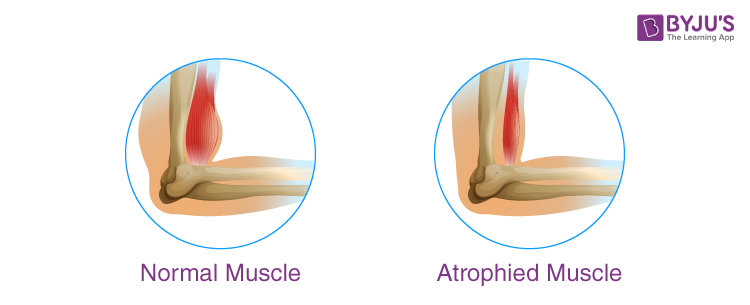What is Muscular Dystrophy?
Muscular dystrophy is a group of inherited diseases where voluntary muscles are damaged and progressively weaken. It is due to the lack of a protein “dystrophin”, which is required for healthy muscular function. There is a loss of strength in muscles, which leads to difficulty in muscle coordination, walking and increases disability and deformation.

Muscular dystrophy can occur at any stage of life but it mostly occurs in childhood. Young boys are more prone to disease. Individuals with the disease eventually lose their walking ability and need assistance to walk. There is no known cure although treatments may help in managing the symptoms.
Table of Content:
What are the Types of Muscular Dystrophy
There are mainly 9 types of muscular dystrophy which vary in symptoms, age of onset, severity and rate of progression. Some are named after the muscle they affect.
- Duchenne
- Myotonic
- Becker
- Congenital
- Facioscapulohumeral
- Limb-girdle
- Oculopharyngeal
- Distal
- Emery-Dreifuss
Muscular Dystrophy Symptoms
| Type | Age of onset | Common Symptoms |
| Duchenne | 2 to 6 years |
|
| Myotonic or Steinert’s disease | 20 to 30 years |
|
| Becker | Adolescence 11-15 years |
|
| Congenital | By birth |
joint deformities, inability to sit or stand
|
| Facioscapulohumeral | Childhood to early adult |
|
| Limb-girdle | Late childhood to middle age |
|
| Oculopharyngeal | 40 to 50 years |
|
| Distal | 40 to 60 years |
|
| Emery-Dreifuss | Childhood to early teens |
|
Causes of Muscular Dystrophy
It is mostly caused by the mutation of genes that are responsible for the structure and function of muscle, leading to weakness in muscles and disability. The disease is caused due to interference in the formation of a protein called dystrophin which is required for normal functioning of muscles. Muscular dystrophy is mostly inheritable and runs in families. It can be sex-linked, recessive or dominant inherited disorder. Very rarely is it spontaneous where there is no history in a family.
Treatment
There is no cure for muscular dystrophy. Whatever treatments that are available, they only help in managing the condition and slowing the progression.
- Steroid medication for strengthening muscles
- Surgery to correct deformities, cataract and treat cardiac complications
- Therapies like exercises to strengthen muscles, yoga is found to be helpful in making an individual more independent
- Exercise or surgery to improve the swallowing problem
- Ataluren is a new medicine to treat Duchenne disease patients of age 5 years or older who can still walk.
Lots of research is happening to develop new treatments for the disease. Some examples are exon skipping, use of stem cells to regenerate damaged muscle tissue.
Also Read: MCQs on Muscular Dystrophy for NEET 2020

Comments